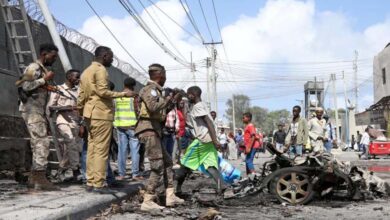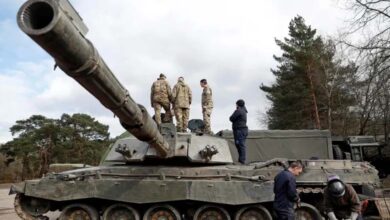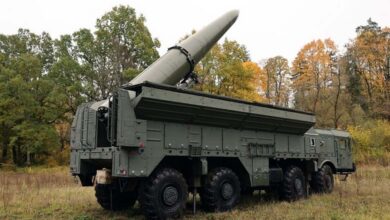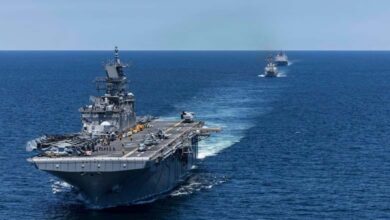Indian Army vs. Pakistani Army: Comprehensive Comparison of Military Power Between the Two Nuclear Neighbors
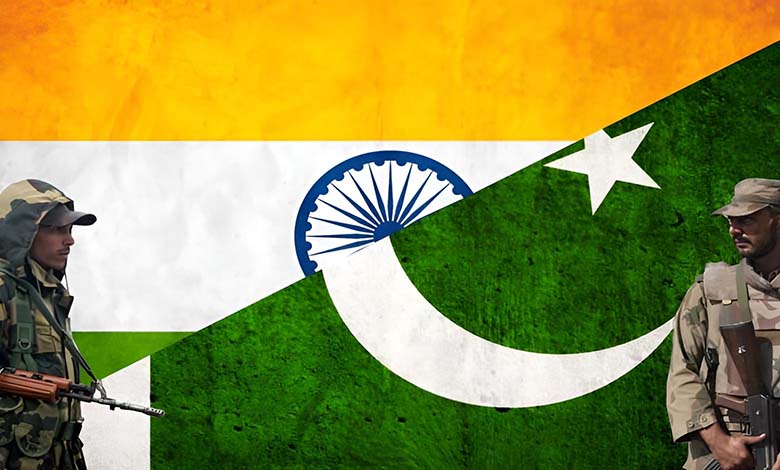
Tensions between India and Pakistan have escalated significantly following the attack carried out last Tuesday by gunmen in Pahalgam, located in the Indian-administered part of Kashmir, which resulted in the deaths of 26 people.
-
Will a Nuclear War Break Out with India? Pakistan’s Defense Minister Gives a Decisive Answer
-
The Relationship Between Al-Jama’ah Al-Islamiyah in Bangladesh and the Muslim Brotherhood is Extremely Strong: How?
Amid threats of an imminent military response that could lead to an armed conflict between the two nuclear-armed neighbors, comparing India and Pakistan offers insight into the balance of power between these historic rivals.
According to the latest rankings from Global Firepower, a platform that assesses military strength worldwide, India leads the regional military landscape, while Pakistan continues to enhance its capabilities to counterbalance India’s dominance.
-
The UAE announces Nawaz Sharif’s victory in the Pakistani elections
-
Anger at India over comments by a senior official deemed “Islamophobic”
Global Ranking
India ranks 4th globally in the 2025 Military Strength Index, reflecting its status as a leading military power.
Pakistan is ranked 12th, highlighting its position as a strong regional power, despite the clear disparity in resources.
-
What Are the Implications of Lifting the Ban on Jamaa Islamiya in Bangladesh?
-
Linked to the Muslim Brotherhood: What Do You Know About Al-Jama’a al-Islamiyya in Bangladesh?
Massive Manpower
India benefits from a vast strategic human resource, with a population exceeding 1.4 billion, compared to approximately 252 million in Pakistan.
India’s serviceable manpower exceeds 522 million, while Pakistan’s stands at around 86 million.
India maintains over 1.4 million active military personnel, with more than 1 million in reserve, compared to Pakistan’s 654,000 active soldiers and approximately 550,000 reservists.
-
“Daesh Khorasan” Emerges in Afghanistan
-
Rescue of Members of the Qatari Royal Family from a Bombing in Pakistan
Military Budget
India has a significantly larger defense budget of $75 billion, more than nine times Pakistan’s budget of $7.6 billion.
This financial edge translates into more diversified weapon systems, greater investment in training, and advanced technological upgrades.
Air Force
India operates a fleet of 2,229 aircraft, including 513 fighter jets, and 899 helicopters (80 of which are attack helicopters), featuring advanced models like the Su-30MKI and Rafale, boosting its air superiority.
Pakistan, by comparison, has 1,399 aircraft, including 328 fighter jets and 373 helicopters, with 57 attack helicopters.
Despite India’s numerical and technological lead, Pakistan is actively developing its aviation industry in collaboration with China, especially through the JF-17 fighter jet program.
-
New Terrorist Attack in Pakistan: Casualties and Injuries
-
Who is Amin al-Haq, Bin Laden’s Associate Arrested in Pakistan?
Land Forces
India fields 4,201 tanks, nearly 148,000 armored vehicles, and 3,243 towed artillery pieces, along with high-tech weapons such as BrahMos missiles, among the fastest in the world.
Pakistan has 2,627 tanks and about 50,000 armored vehicles, and it excels in self-propelled artillery with 752 units, compared to just 140 for India, offering it flexibility in short-term ground engagements.
Naval Forces
India enjoys clear superiority with a fleet of 293 naval assets, including 2 aircraft carriers, 18 submarines (including nuclear-powered ones), and 12 destroyers, strengthening its dominance in the Indian Ocean.
Pakistan’s fleet comprises 121 naval assets, with no aircraft carriers, 8 submarines, 2 destroyers, and 9 frigates.
-
Judicial Escalation: Imran Khan’s Party Faces Potential Ban in Pakistan
-
Tehran refuses cooperation… Pakistan accuses Iran of harboring terrorist groups
Nuclear Power
According to the Federation of American Scientists (FAS), India possesses approximately 180 nuclear warheads, with delivery capabilities including Agni ballistic missiles.
Pakistan holds about 170 nuclear warheads, with missiles such as Shaheen, considered effective in nuclear deterrence.
Strategic Advantages
India’s military power is backed by its massive budget, large manpower pool, and diversified equipment, establishing it as a dominant regional force. Its geographic location further strengthens its control over the Indian Ocean.
Pakistan, however, leverages its strategic location—particularly its proximity to Afghanistan and the Khyber Pass—and its superiority in artillery and ground-based missiles, making it a serious force in strategic deterrence.


